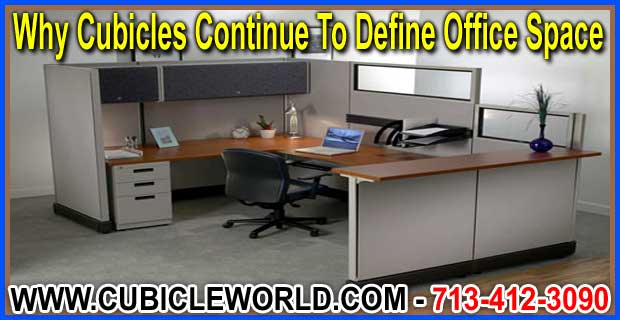
Like them or not, office cubicles have persisted for years as an integral part of how we work. Among other things and depending on who you ask, the cubicle has been seen as both a symbol of freedom and one of enslavement. With its high level of customizability and numerous possible configurations, the modern office cubicle is a dynamic response to years of theory and application that has sought to understand how best to create an effective work environment. Despite the mixed feelings, this may explain why it’s long stayed a fixture in so many people’s work lives.
Even before cubicles, people knew the considerable impact office space planning had on many aspects of workplace productivity, including social interaction, personal privacy, and mental well-being. In the early 1900s American engineer Frederick Taylor realized a design scheme that highlighted efficiency as a top priority. Taylorism was characterized by a single room of many employees working through the day and overseen by supervisor in a central office. There was virtually no socialization, and with the use of simple individual desks, no privacy either. The plan was criticized for neglecting the human element as well as the importance of employee collaboration. In 1960 we got closer to cubicles with Germany’s Bürolandschaft (“office landscape”). Reflecting the socialist values shared by many Europeans at the time, this concept traded centralization and hierarchy in for a workplace that better facilitated employee collaboration, mainly by grouping workstations according to employee function.
With 1968 came Action Office, a workspace produced from a collaboration between designer Herman Miller and inventor Robert Propst. The inspiration that Bürolandschaft had on Miller, along with Propst’s findings that an open-air office space without privacy can actually hinder productivity, led to a more user-responsive, modular office furniture system that featured privacy dividers, adaptable work surfaces, and configurability of units into larger groups. With time and trial and error, it was eventually determined that a cube was the most efficient form for organizing Action Office workstations in an open space. Therefore, the modern cubicle was created.
Throughout the 1970s the oil crisis put a damper on the production and use of cubicles. But with the help of cheap production and tax deduction, they’d make a comeback. After the oil crisis and through the 1980s, major organizational changes were occurring among corporations. Some were merging and shrinking, some saw a ballooning of middle management, but overall there was an increasing number of office staff sharing limited areas of space. To address this, cubicles reduced in size to as much as 50% their original floor space became common. All these factors led to an extreme version of cubicle-based planning known as the “cubicle farm.” It didn’t take long to realize the negative effects this had on workers and by the mid-1990s cubicle space reached as much as 90 square feet in floor area.
Many negative stereotypes about modern cubicles that still persist today are likely informed by this cubicle-farm stage of development. The image of employees packed into a vast sea of cubicles might illustrate the height of efficiency for some but it also conjures feelings of anonymity, conformity, and isolation in many others. Despite the negative connotations, there’s a reason that the modern office cubicle is still a representative image of the office workspace. Its success is largely due to its dynamic nature and endless customizability in order to adapt to a myriad of needs. Over the years we’ve gradually learned what makes an ideal work environment. The terms “worker productivity” and “cost efficiency” have expanded in meaning to include flexibility of space, interaction among coworkers, and responsiveness to psychological and biological needs, among others things.
Cubicles can be built to a variety of sizes according the to spatial parameters of your office. Depending on whether sound and visual privacy are important for your workplace, cubicles can consist of panels of varying number and height, and even the inclusion of a sliding door or curtain is possible particularly in the case of enclosed office cubicles. Cubicle panels and surfaces can come in a countless number of materials from opaque to transparent, including fabric, metal, wood, glass. Lighting needs, whether met with natural lighting or mechanical task lighting, can be addressed by the inclusion of windows in panels or built-in LED lighting, respectively. Storage and file drawers as well as overhead storage bins can be included in your cubicle for when there’s not enough work surface to accommodate all your existing office items. With all of these features and more that can be tailored to the modern worker’s individual needs, even the cynic can see why cubicles are so important in the built environment of our office spaces. Contact us today.
Office Cubicles – FREE Quote 713-412-3090
